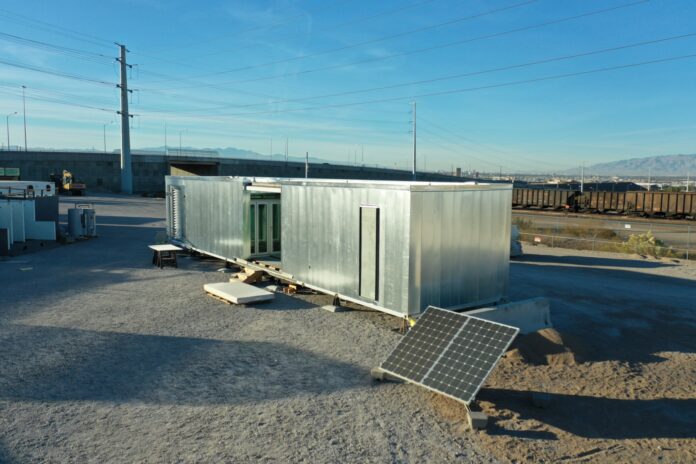
UNLV scored third place in the 2020 Department of Energy Solar Decathlon Build Challenge, where architecture, engineering and many more students participated to unveil the Mojave Bloom. The team designed a house with the intention to house those affected by post-traumatic stress disorders and traumatic brain injuries while being self-sufficient.
The DOE Solar Decathlon build challenge is a biannual international competition, judged in 10 categories by a jury in every category. UNLV landed first in operations, second place in innovations and scored top three in almost half the categories, scoring them overall third place in the competition.
“When I was a new faculty member in the School of Architecture, we were interested in starting what’s known as a design-build program,” said Eric Weber, UNLV associate professor, coordinator of Build+Design program and principal investigator of the team. A well-respected way to teach architecture, he describes. “We saw that the U.S. Department of Energy was sponsoring this competition, in which students design and build solar-powered housing prototypes, this was a perfect opportunity for us to establish the program.”
This program allowed architecture students to work across disciplines and over UNLV’s campus, including the engineering, business and fine-arts departments.
“One of our biggest marketing teammates is a Ph.D. candidate in geology,” says Ryan Manthei, UNLV graduate student and team lead of the team. “She’s been invaluable as far as helping us with doing a newsletter and a lot of the presentations we’ve done, both on putting it together and physically standing up in front of an audience.”
The project had many hurdles, as the project started in 2019. When COVID-19 hit last year, Weber was deemed a high-risk individual, preventing him from going to the worksite to aid students in the construction.
The targeted audience for the construction of the house is focused on those who suffer from PTSD and TBI, like military veterans. This allowed the team to conduct research to see what causes triggers in homes. According to Manthei, unknown noises were the strongest triggers for those suffering from PTSD and TBI. What the team did is create a ceiling that removes echoes from the home. The house is also insulated, providing a degree of soundproofing from the outside.
Veterans also expressed that those who suffer from PTSD and TBI feel most safe in their environment when they can see everything. The UNLV team created a glass-walled courtyard in the middle of the house so that when sound does leak through the home, the owner can easily take a glance of the house and quickly realize they are safe.
Manthei has been a part of the project from the beginning, building an extensive resume thanks to the Build+Design program at the UNLV school of architecture coordinated by Weber.
“A lot of students coming out of architecture school have just paper drawings in their portfolios, whereas I have like a real building that was constructed,” said Manthei.
Weber agrees that this is one of the best ways to build a resume as an architecture student.
“One of the most important things for students is to see what’s possible at UNLV,” said Weber. “It’s just taking hold of those opportunities when they come up as students, is something I can’t emphasize enough.”
Manthei pointed out that it took a village to construct the house. At any point in time, he said there were at least 50 students on the project and up to six advisors. Weber just wants to help as many students build real-world knowledge of architecture.
“I want students to be as excited about these opportunities as I am,” said Weber. “In this case, I believe they were and that’s super cool.”
